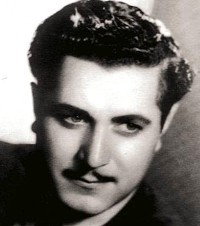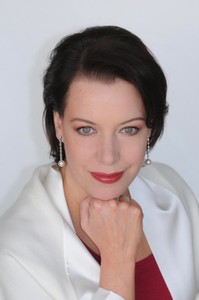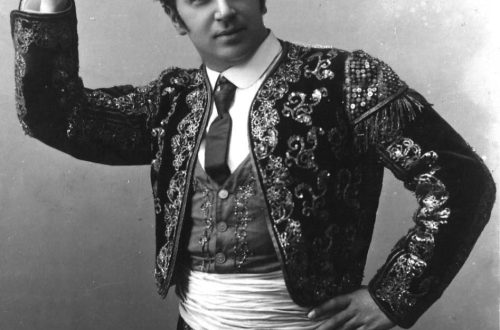
Joan Sutherland |
Joan Sutherland

Sutherland’s amazing voice, combining coloratura mastery with dramatic richness, richness of timbre colors with clarity of voice leading, has captivated lovers and experts in vocal art for many years. Forty years lasted her successful theatrical career. Few singers possessed such a wide genre and stylistic palette. She felt equally at ease not only in the Italian and Austro-German repertoire, but also in French. Since the early 60s, Sutherland has been one of the biggest singers of our time. In articles and reviews, she is often referred to by the sonorous Italian word La Stupenda (“Amazing”).
Joan Sutherland was born in the Australian city of Sydney on November 7, 1926. The mother of the future singer had an excellent mezzo-soprano, although she did not become a singer due to the resistance of her parents. Imitating her mother, the girl performed the vocals of Manuel Garcia and Matilda Marchesi.
The meeting with the Sydney vocal teacher Aida Dickens was decisive for Joan. She discovered a real dramatic soprano in the girl. Prior to this, Joan was convinced that she had a mezzo-soprano.
Sutherland received her professional education at the Sydney Conservatory. While still a student, Joan begins her concert activity, having traveled to many cities of the country. She was often accompanied by student pianist Richard Boning. Who would have thought that this was the beginning of a creative duet that became famous in many countries of the world.
At twenty-one, Sutherland sang her first operatic part, Dido in Purcell’s Dido and Aeneas, at a concert in Sydney’s Town Hall. The next two years, Joan continues to perform in concerts. In addition, she takes part in all-Australian singing competitions and takes first place both times. On the opera stage, Sutherland made her debut in 1950 in her hometown, in the title role in the opera “Judith” by J. Goossens.
In 1951, following Bonynge, Joan moved to London. Sutherland does a lot of work with Richard, polishing every vocal phrase. She also studied for a year at the Royal College of Music in London with Clive Carey.
However, only with great difficulty Sutherland gets into the Covent Garden troupe. In October 1952, the young singer sings the small part of the First Lady in Mozart’s The Magic Flute. But after Joan successfully performed as Amelia in Un ballo in maschera by Verdi, replacing the suddenly ill German singer Elena Werth, the theater management believed in her abilities. Already in the debut season, Sutherland trusted the role of the Countess (“The Wedding of Figaro”) and Penelope Rich (“Gloriana” Britten). In 1954, Joan sings the title role in Aida and Agatha in a new production of Weber’s The Magic Shooter.
In the same year, an important event takes place in Sutherland’s personal life – she marries Boninj. Her husband began to orient Joan towards lyric-coloratura parts, believing that they most of all correspond to the nature of her talent. The artist doubted this, but nevertheless agreed and in 1955 she sang several such roles. The most interesting work was the technically difficult part of Jennifer in the opera Midsummer Night’s Wedding by contemporary English composer Michael Tippett.
From 1956 to 1960, Sutherland took part in the Glyndebourne Festival, where she sang the parts of Countess Almaviva (The Marriage of Figaro), Donna Anna (Don Giovanni), Madame Hertz in Mozart’s vaudeville The Theater Director.
In 1957, Sutherland rose to fame as a Handelian singer, singing the title role in Alcina. “Outstanding Handelian singer of our time,” they wrote in the press about her. The following year, Sutherland went on foreign tour for the first time: she sang the soprano part in Verdi’s Requiem at the Holland Festival, and Don Giovanni at the Vancouver Festival in Canada.
The singer is getting closer to her goal – to perform the works of the great Italian bel canto composers – Rossini, Bellini, Donizetti. The decisive test of Sutherland’s strength was the role of Lucia di Lammermoor in Donizetti’s opera of the same name, which required an impeccable mastery of the classical bel canto style.
With loud applause, the Covent Garden listeners appreciated the skill of the singer. Prominent English musicologist Harold Rosenthal called Sutherland’s performance “revelatory”, and the interpretation of the role – amazing in emotional strength. So with the London triumph, world fame comes to Sutherland. Since that time, the best opera houses have been eager to conclude contracts with her.
New successes bring the artist performances in Vienna, Venice, Palermo. Sutherland withstood the test of the demanding Parisian public, conquering the Grand Opera in April 1960, all in the same Lucia di Lammermoor.
“If someone had told me just a week ago that I would listen to Lucia not only without the slightest boredom, but with the feeling that arises when enjoying a masterpiece, a great work written for the lyrical stage, I would be unspeakably surprised, ”said French critic Marc Pencherl in a review.
The following April, Sutherland shone on stage at La Scala in the title role in Bellini’s Beatrice di Tenda. In the fall of the same year, the singer made her debut on the stages of the three largest American opera houses: San Francisco, Chicago and the New York Metropolitan Opera. Debuting at the Metropolitan Opera as Lucia, she performed there for 25 years.
In 1963, another dream of Sutherland came true – she sang Norma for the first time on the stage of the theater in Vancouver. Then the artist sang this part in London in November 1967 and in New York on the stage of the Metropolitan in the 1969/70 and 1970/71 seasons.
“The interpretation of Sutherland caused a lot of controversy among musicians and lovers of vocal art,” writes V.V. Timokhin. — At first, it was even difficult to imagine that the image of this warrior priestess, which Kallas embodied with such amazing drama, could appear in any other emotional perspective!
In her interpretation, Sutherland placed the main emphasis on soft elegiac, poetic contemplation. There was almost nothing of the heroic impetuosity of Callas in her. Of course, first of all, all the lyrical, dreamily enlightened episodes in the role of Norma – and above all the prayer “Casta Diva” – sounded exceptionally impressive with Sutherland. However, one cannot but agree with the opinion of those critics who pointed out that such a rethinking of the role of Norma, shading the poetic beauty of Bellini’s music, nevertheless, on the whole, objectively, impoverished the character created by the composer.
In 1965, for the first time after a fourteen-year absence, Sutherland returned to Australia. The arrival of the singer was a real treat for lovers of vocal art in Australia, who enthusiastically welcomed Joan. The local press paid much attention to the singer’s tour. Since then, Sutherland has performed repeatedly in her homeland. She left the stage in her native Sydney in 1990, performing the part of Marguerite in Meyerbeer’s Les Huguenots.
In June 1966, at the Covent Garden Theatre, she performed for the first time as Maria in Donizetti’s opera Daughter of the Regiment, which is extremely rare on the modern stage. This opera was performed for Sutherland and New York in February 1972. Sunny, affectionate, spontaneous, captivating – these are just a few of the epithets that the singer deserves in this unforgettable role.
The singer did not reduce her creative activity in the 70s and 80s. So in Seattle, USA in November 1970, Sutherland performed all four female roles in Offenbach’s comic opera The Tales of Hoffmann. Criticism attributed this work of the singer to the number of her best.
In 1977, the singer sang for the first time at Covent Garden Mary Stuart in Donizetti’s opera of the same name. In London, in 1983, she once again sang one of her best parts – Esclarmonde in Massenet’s opera of the same name.
Since the early 60s, Sutherland has performed almost constantly in an ensemble with her husband, Richard Boninge. Together with him, she carried out most of her recordings. The best of them: “Anna Boleyn”, “Daughter of the Regiment”, “Lucretia Borgia”, “Lucia di Lammermoor”, “Love Potion” and “Mary Stuart” by Donizetti; “Beatrice di Tenda”, “Norma”, “Puritanes” and “Sleepwalker” by Bellini; Rossini’s Semiramide, Verdi’s La Traviata, Meyerbeer’s Huguenots, Massenet’s Esclarmonde.
The singer made one of her best recordings in the opera Turandot with Zubin Meta. This recording of the opera is among the best among thirty audio versions of Puccini’s masterpiece. Sutherland, who on the whole is not very typical of this kind of party, where expression is needed, sometimes reaching brutality, managed to reveal new features of Turandot’s image here. It turned out to be more “crystal”, piercing and somewhat defenseless. Behind the severity and extravagance of the princess, her suffering soul began to be felt. From here, the miraculous transformation of a hard-hearted beauty into a loving woman turns out to be more logical.
Here is the opinion of V.V. Timokhin:
“Although Sutherland never studied in Italy and had no Italian vocalists among her teachers, the artist made a name for herself primarily for her outstanding interpretation of roles in Italian operas of the XNUMXth century. Even in the very voice of Sutherland – a rare instrument, unusual in beauty and variety of timbre colors – critics find characteristic Italian qualities: sparkle, sunny brightness, juiciness, sparkling brilliance. The sounds of its upper register, clear, transparent and silvery, resemble a flute, the middle register, with its warmth and fullness, gives the impression of soulful oboe singing, and soft and velvety low notes seem to come from the cello. Such a rich range of sound shades is the result of the fact that for a long time Sutherland performed first as a mezzo-soprano, then as a dramatic soprano, and finally as a coloratura. This helped the singer to fully understand all the possibilities of her voice, she paid special attention to the upper register, since initially the limit of her abilities was “up to” the third octave; now she easily and freely takes “fa”.
Sutherland owns his voice like a complete virtuoso with his instrument. But for her there is never a technique for the sake of showing the technique itself, all her delicately executed most complex graces fit into the overall emotional structure of the role, into the overall musical pattern as its integral part.





